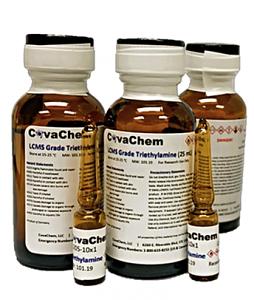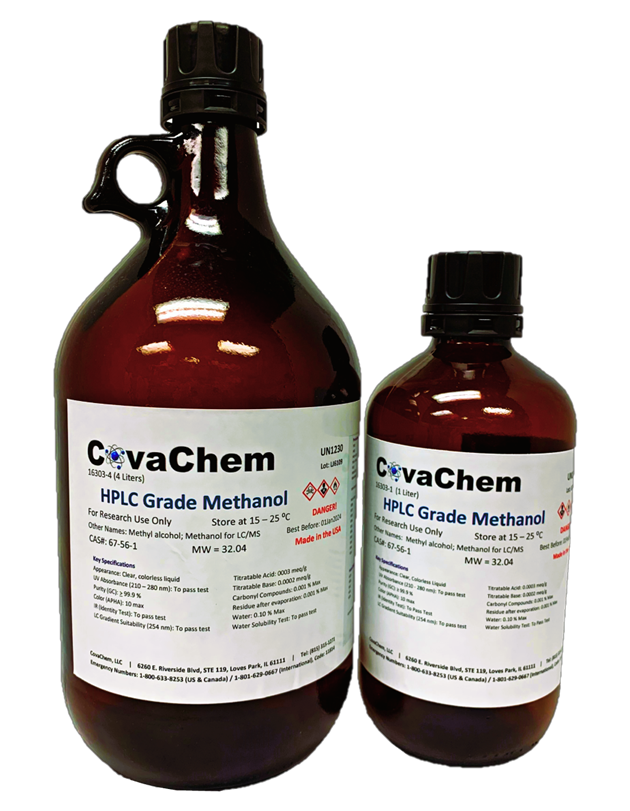The selection of the proper mobile phase is a critical component of successfully analyzing a sample by HPLC and LCMS. Good liquid chromatography begins with high quality mobile phase additives from CovaChem.A typical requirement for LCMS buffers is that all additives added to the mobile phase should be volatile. In addition to having all of the important properties associated with HPLC buffers and solvents that lead to good separation, the need for mobile phase volatility is equally as important. This is one of the reasons why inorganic buffers, such as phosphate buffers, do not find much utility in LCMS applications. Although phosphate buffers and other inorganic buffers are quite useful in providing good analyte separations in HPLC, and are often an excellent choice for improving peak shape and reducing tailing effects of highly polar compounds, they are typically not used in LCMS due to their lack of volatility. Trifluoroacetic acid(CovaChem 11204), provides a good alternative when analyte resolution is difficult or polar functional groups cause poor peak shape. TFA, when added to reversed phase mobile phases (such as Water and Acetonitrile), provides an acidic pH controlled environment, where protonation states of the analyte remain consistent. Furthermore, TFA has an ion pairing effect, which is sometimes of critical importance when trying to separate polar compounds with subtle structural variations, such as peptides or amino acids. TFA Buffers are volatile, and can be used in LCMS applications, but certain things should be considered when doing so. The ion pairing effect of TFA, which can be of great benefit to chromatographic separations, can cause decreased ionization efficiencies in the mass spectrometer, due to partial charge masking of the analyte. One very useful technique for reversing this ion pairing effect for optimal ionization is the employment of a “TFA fix.” There are a couple of approaches one can take when trying to maximize ionization efficiency when using TFA in their HPLC-MS (LCMS) mobile phase. The first approach involves reducing the concentration of TFA in the mobile phase and increasing the concentration of another volatile organic acid, such as Formic acid, which has a weaker ion pairing effect than TFA. This is the basis behind CovaChem’s LCMS Grade Formic Acid plus TFA, 1.1 mL ampules (CovaChem 11207-10×1) and 25 mL premade formulation. This product when added to the mobile phase tends to give all the benefits of TFA in the separation, but less peak suppression in the mass spectrometer, due to the lower abundance of the trifluoroacetate anion at the ionization source. The second approach involves the post column addition of a volatile organic acid, typically Propionic acid (CovaChem 11206), Acetic acid (CovaChem 11201) or Formic acid (CovaChem 11202), with the former being the most common. This is accomplished by using a mechanical syringe pump and a “T” fitting. While using a minimum amount of tubing, the post column eluent is directed toward the “T” fitting, which has a syringe pump containing either concentrated or dilute organic acid. The organic acid in the syringe is slowly and continuously pumped into the “T” fitting, and the post column eluent and TFA fix acid are mixed in the fitting and directed towards the electrospray ionization source for detection by mass spectrometry. Both approaches are very effective ways of preventing peak masking and ion suppression in the ESI chamber, however because every chromatographic application is unique, requiring its own set of chromatography conditions, it is impossible to say which approach will give the best results without a direct comparison. Regardless, when TFA is deemed necessary for your LCMS separation, it is nice to know you have one more tool in the toolbox to help get the job done. |





